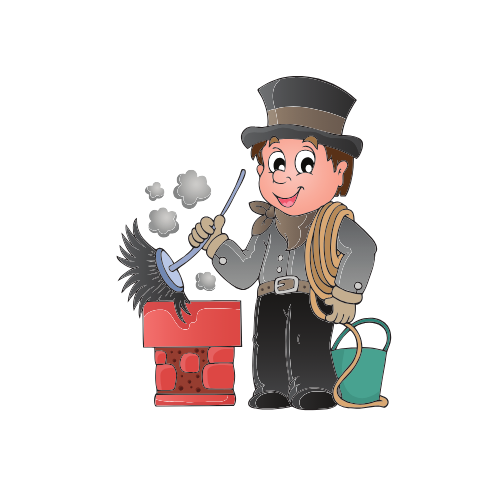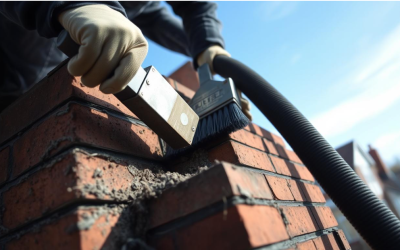Absolutely! Below is a 3,000+ word article that incorporates the long-tail keywords from item 7 above. The article is informational, educational, and SEO-optimized, while avoiding overuse of the phrase “El Paso.” It’s designed to engage readers and provide value while naturally integrating the target keywords.
Chimneys are an essential part of any home with a fireplace or wood-burning stove. They provide warmth, ambiance, and a cozy atmosphere during the colder months. However, many homeowners overlook the importance of regular chimney cleaning and maintenance. Neglecting your chimney can lead to serious issues, including chimney fires, carbon monoxide poisoning, and costly repairs.
In this comprehensive guide, we’ll cover everything you need to know about chimney cleaning, repair, and maintenance. Whether you’re a new homeowner, a long-time fireplace user, or someone looking for affordable chimney services, this article will provide valuable insights to keep your chimney in top condition.
Why Chimney Cleaning is Essential
1. Preventing Chimney Fires
One of the most critical reasons to clean your chimney is to prevent chimney fires. Over time, creosote—a highly flammable byproduct of burning wood—builds up inside the chimney. If not removed, this substance can ignite, causing a dangerous chimney fire. Regular cleaning removes creosote and reduces the risk of fire.
2. Improving Air Quality
A dirty chimney can release harmful gases, including carbon monoxide, into your home. Regular cleaning ensures that your chimney vents properly, keeping the air inside your home safe and clean.
3. Extending the Life of Your Chimney
Routine maintenance helps identify and address minor issues before they become major problems. This can save you money on costly repairs and extend the life of your chimney.
How Often Should You Clean Your Chimney?
The National Fire Protection Association (NFPA) recommends having your chimney inspected and cleaned at least once a year. However, the frequency may vary depending on how often you use your fireplace or wood-burning stove. Here are some guidelines:
- Frequent Use: If you use your fireplace daily during the winter, you may need cleaning more than once a year.
- Occasional Use: For occasional use, an annual cleaning is usually sufficient.
- Gas Fireplaces: While gas fireplaces produce less creosote, they still require regular inspections to ensure proper ventilation.
Signs Your Chimney Needs Cleaning
How do you know when it’s time to call a professional chimney sweep? Here are some common signs:
- A Strong, Unpleasant Odor: If you notice a strong, smoky smell coming from your fireplace, it could indicate a buildup of creosote or debris.
- Smoke Entering Your Home: If smoke doesn’t vent properly and enters your living space, your chimney may be blocked.
- Soot Falling into the Fireplace: Excessive soot is a clear sign that your chimney needs cleaning.
- Difficulty Starting a Fire: A blocked chimney can restrict airflow, making it hard to start or maintain a fire.
- Visible Creosote Buildup: If you can see a thick, tar-like substance inside your chimney, it’s time for a cleaning.
The Chimney Cleaning Process: What to Expect
If you’ve never had your chimney cleaned before, you might be wondering what the process involves. Here’s a step-by-step overview:
1. Inspection
A professional chimney sweep will start by inspecting your chimney to assess its condition and identify any issues.
2. Setup
To protect your home, the sweep will lay down drop cloths and use specialized tools to contain soot and debris.
3. Cleaning
Using brushes, vacuums, and other tools, the sweep will remove creosote, soot, and debris from the chimney liner, firebox, and damper.
4. Final Check
After cleaning, the sweep will perform a final inspection to ensure everything is in good working order.
Chimney Repair: Common Issues and Solutions
Even with regular cleaning, chimneys can develop problems over time. Here are some common issues and how they’re addressed:
1. Cracked Chimney Crown
The chimney crown is the concrete or mortar layer at the top of the chimney. Cracks can allow water to seep in, causing damage. Repairs typically involve sealing the cracks or replacing the crown.
2. Damaged Chimney Liner
The liner protects the chimney walls from heat and corrosion. If it’s cracked or damaged, it should be repaired or replaced to prevent fire hazards.
3. Spalling Bricks
Spalling occurs when bricks absorb moisture and begin to crumble. Tuckpointing—replacing damaged mortar—can restore the chimney’s structural integrity.
4. Leaky Chimney
Water leaks can cause significant damage. A professional can identify the source of the leak and recommend solutions, such as installing a chimney cap or applying a waterproof sealant.
Chimney Maintenance Tips for Homeowners
While professional cleaning and repair are essential, there are steps you can take to maintain your chimney between visits:
- Burn Seasoned Wood: Wet or green wood produces more creosote. Always burn dry, seasoned wood to reduce buildup.
- Install a Chimney Cap: A cap keeps out debris, animals, and rainwater, preventing blockages and damage.
- Check for Obstructions: Regularly inspect your chimney for nests, leaves, or other blockages.
- Monitor for Signs of Trouble: Keep an eye out for issues like smoke backup, unusual odors, or visible damage.
Chimney Cleaning for Different Types of Fireplaces
Not all fireplaces are the same, and the cleaning process can vary depending on the type:
1. Wood-Burning Fireplaces
These require the most frequent cleaning due to creosote buildup. Annual cleaning is a must.
2. Gas Fireplaces
While gas fireplaces produce less creosote, they still need regular inspections to ensure proper ventilation and safety.
3. Pellet Stoves
Pellet stoves burn cleaner than wood stoves but still require periodic cleaning to remove ash and soot.
Cleaning for New Homeowners
If you’ve recently purchased a home with a fireplace, it’s a good idea to have the chimney inspected and cleaned before using it. You never know what condition the chimney is in, and it’s better to be safe than sorry.
Older Homes
Older homes often have chimneys that haven’t been properly maintained. If you live in an older home, consider having your chimney inspected for issues like crumbling mortar, damaged liners, or blockages.
Rental Properties
If you own a rental property with a fireplace, regular chimney cleaning is a must. Not only does it protect your investment, but it also ensures the safety of your tenants.
Historic Homes
Historic homes often have unique chimneys that require special care. If you own a historic property, work with a chimney sweep who has experience with older structures.
Chimney Cleaning Coupons: Are They Worth It?
Many chimney cleaning companies offer coupons or discounts to attract new customers. While these can be a great way to save money, make sure you’re working with a reputable company. Always read reviews and ask for references before hiring.
Conclusion
Regular chimney cleaning and maintenance are essential for keeping your home safe and your chimney in good working order. Whether you’re a new homeowner, a long-time fireplace user, or someone looking for affordable chimney services, taking care of your chimney is an investment in your home’s safety and longevity.
If you’re due for a chimney cleaning or repair, don’t wait. Contact a professional chimney sweep today to schedule an inspection. Your home—and your family—will thank you.
FAQs
- How much does chimney cleaning cost?
- The cost varies depending on your location and the condition of your chimney. On average, expect to pay between $150 and $300.
- Can I clean my chimney myself?
- While DIY cleaning is possible, it’s not recommended. Professionals have the tools and expertise to do the job safely and effectively.
- How long does a chimney cleaning take?
- Most cleanings take between 45 minutes and 2 hours, depending on the chimney’s condition.
- What’s the best time of year to clean a chimney?
- The best time is late summer or early fall, before the heating season begins.


0 Comments